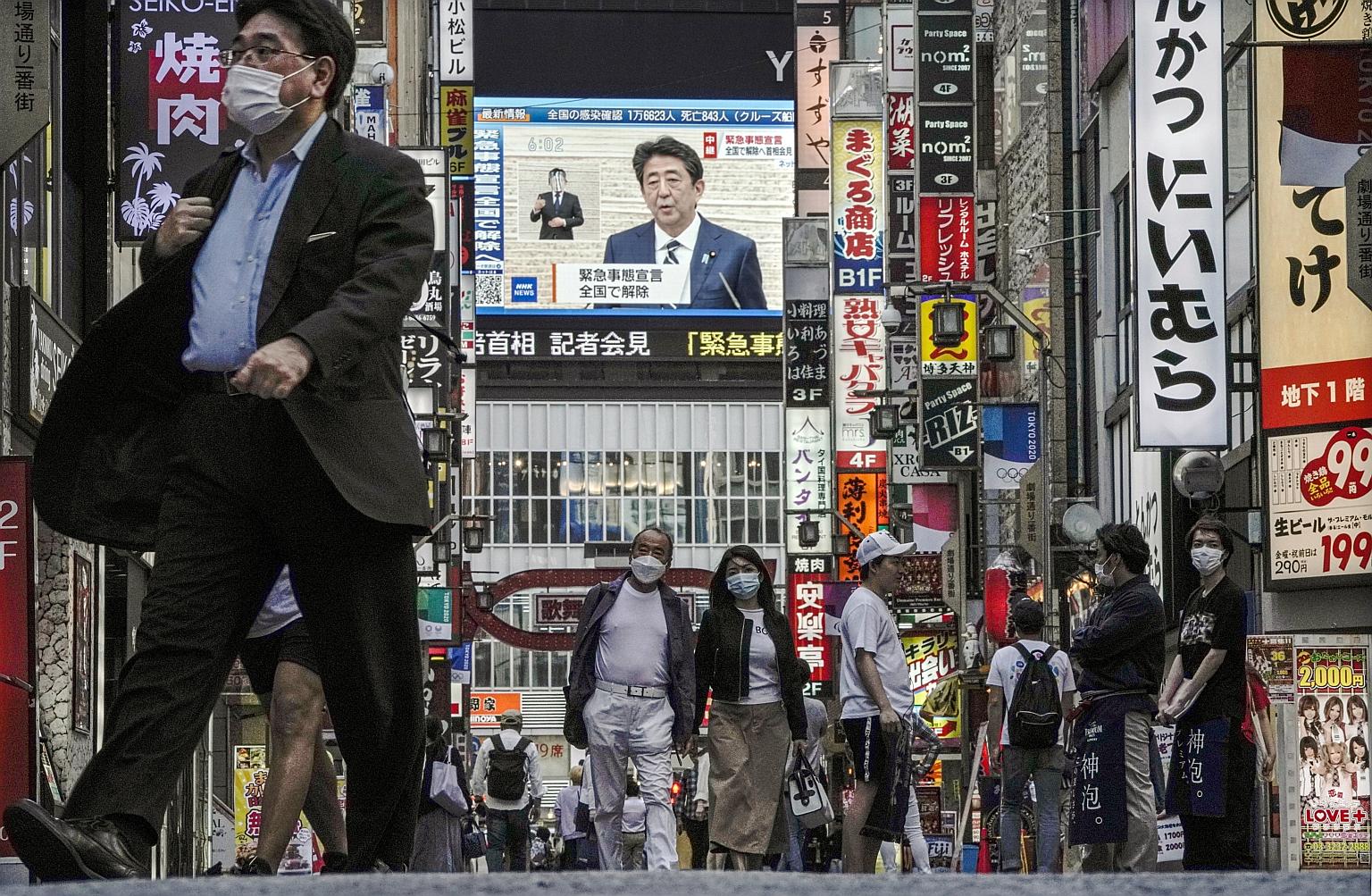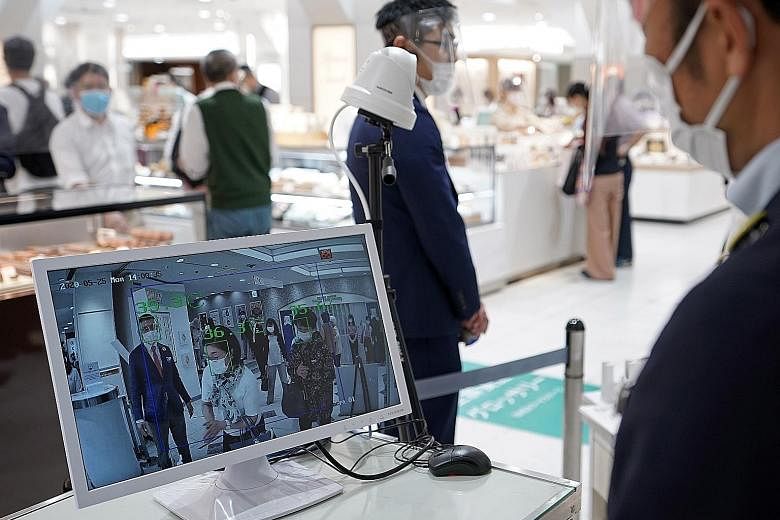With an eye on firing up an economy in recession, Japan is planning a second round of stimulus bringing the total value of its Covid-19 rescue package to over 200 trillion yen (S$2.7 trillion), or a whopping 40 per cent of its gross domestic product.
And with the number of daily infections on the decline, Prime Minister Shinzo Abe has lifted the state of emergency ahead of its planned expiry on Sunday.
The latest round of stimulus, announced by Mr Abe yesterday, brings the total package well above the previously pledged 117.1 trillion yen and is set to be passed by the Cabinet tomorrow.
It will include more support for small and medium-sized enterprises, including rent waivers and interest-free loans of up to five years, as well as payouts of 200,000 yen for every medical front-line worker.
The emergency decree was first declared on April 7 and then later expanded nationwide. It ended in many regions earlier this month.
The decree was lifted in the remaining five prefectures of Tokyo, Chiba, Kanagawa, Saitama and Hokkaido. The first four prefectures comprise the Greater Tokyo region, forming the 11th-largest economy in the world.
Japan's state of emergency was more lenient than lockdowns elsewhere in the world, imposing "self-restraint advisories" on businesses that were requested to close and on people who were asked to stay home. There are no criminal penalties on those that do not comply.
However, the prevailing sense of social responsibility reduced busy metropolitan areas, like Tokyo and Osaka, to ghost towns and left the economy reeling in recession.
Japan's economy shrank 3.4 per cent in the last quarter from a year earlier and economists say it could decline as much as 20 per cent in this quarter.
"Japan has, in its own way, managed to bring the epidemic under control in just 1½ months," Mr Abe said. "We have demonstrated the power of the Japan model."
Yet the end of the emergency declaration ushers in an uneasy "new normal", with the Prime Minister telling a news conference yesterday that a "new lifestyle" predicated on the fact that the virus is here to stay should be maintained.
This means that members of the public are expected to continue wearing masks in public and practise social distancing, and there will be a phased easing of restrictions.
Travel between prefectures, for example, will continue to be discouraged until next month, though a major domestic tourism campaign worth 1.7 trillion yen is being planned for late July to stimulate the industry.
Companies should also continue practising teleworking or staggered hours, Mr Abe said, adding that he hopes Tokyo's notoriously crowded, morning rush hour trains will not be repeated.
Japan has avoided the explosive surge in cases seen elsewhere, with a tally of 16,628 cases and 851 deaths as of 7pm yesterday.
Tokyo, which accounts for about one in three cases, recorded fewer than 10 new cases for most of last week, including eight yesterday.
Tokyo Governor Yuriko Koike has announced a road map in which museums, gyms and schools will be allowed to reopen in the first phase, which kicks in at midnight today.
Restaurants will be allowed to shut at 10pm, rather than the current 8pm, while gatherings will be limited to 50 people.

The second phase, which will likely begin on Saturday, involves reopening theatres, cinemas and retail facilities, while in the final stage, amusement parks and game arcades will resume operation.
"It's important to expand economic activities while putting preventative measures in place, and not overlook small waves before they become big," Economic Minister Yasutoshi Nishimura said.
Japan will also conduct random antibody tests so as to find out how widespread infections have occurred and to calibrate its policy responses accordingly.
In a recent study by the University of Tokyo, antibody tests in 500 specimens returned 0.6 per cent positives. Extrapolating this to the capital's 14 million people would mean as many as 80,000 had been infected, or about 16 times the official tally.

